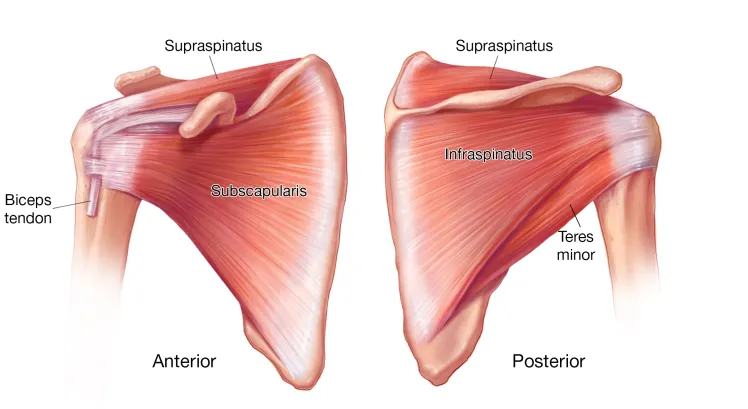- Home
- Subscapularis Tear
Subscapularis Tear
Subscapularis Tear
he subscapularis is a muscle in your shoulder that helps you internally rotate your arm. When your arm is internally rotated, it means that your palm is facing back, behind your body. The subscapularis is the largest muscle in the rotator cuff, which is a group of muscles that attaches your upper arm to your shoulder. These muscles help you lift and rotate your arm. The subscapularis connects from your shoulder blade to your humerus, or upper arm bone.

Symptoms
The most common symptom of a subscapularis tear is shoulder pain, especially in the front of the shoulder. You might also hear or feel “clicking” in your shoulder when you rotate your arm. Some symptoms of a subscapularis tear are very similar to symptoms of other rotator cuff tears. These include:
- pain that gets worse at night
- shoulder or arm weakness
- pain that gets worse when you lift your arm
Other symptoms of a subscapularis tear are unique to this injury. These include:
- bicep weakness
- having a hard time reaching for something in your back pocket or reaching for your back
- pain in the space under your collarbone
- your affected arm rotating outwards (palm facing forwards) without you moving it
BOOK AN APPOINTMENT
“KNEEO Technique”
For
Knee Replacements
Causes
In young people, an injury is the most common cause of a subscapularis tear. This usually happens when your arm is overextended. In older people, subscapularis tears are usually caused by age-related degeneration.
Shoulder impingement can also cause a subscapularis tear. This happens when impingement of other rotator cuff muscles puts pressure on the subscapularis and causes them to tear.
Diagnosis
First, your doctor will take a full history. They’ll ask if you hurt your arm or shoulder recently, what specific symptoms you have, and if there’s anything you’re having trouble doing.
They’ll then do tests to help narrow down what might be causing your pain. There are several tests that your doctor might do to help diagnose a subscapularis tear. These include:
- Lift-off test. Your doctor will ask you to put your hand on your lower back and then try to lift it. If you can’t lift your hand, that’s a sign you have a subscapularis tear.
- Bear hug test. You’ll put the hand of the affected arm on the opposite shoulder. Your doctor will try to pull your hand off your shoulder by rotating your forearm outwards. If you can’t hold your palm on your shoulder or have a lot of trouble holding it on, you might have a tear in your upper subscapularis.
- Belly press test. You’ll put your hand on your stomach and press down, using only your hand (not your wrist or elbow). If this hurts, you might have a subscapularis tear.
After these tests, your doctor will probably do an MRI. The above tests can help your doctor narrow down possible conditions, but an MRI can help them more definitively diagnose the tear, as well as see how serious the tear is.
Overview
All the muscles of the rotator cuff, including the subscapularis, can tear from overuse, trauma, or age-related conditions. Tears can be small or can go through most of the muscle. The size of the tear determines what treatment is needed.
Subscapularis tears are most common near the end of the tendon that connects to the humerus. They can also cause issues with the bicep muscle.



